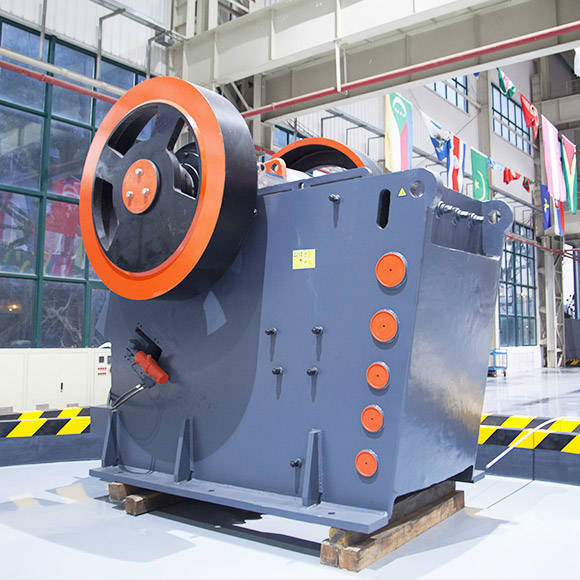A primary jaw crusher is a crucial part of a rock mining operation, serving as the starting point for the initial crushing of the mined material. In the following, we will explore the significance of a primary jaw crusher in rock mining, its key components, working principles, and the advantages it brings to the mining process.
Introduction: Rock mining involves the extraction of valuable minerals or other geological materials from the earth’s surface. The process of breaking down these materials into smaller, manageable pieces begins with a primary jaw crusher, which plays a fundamental role in the overall mining operation.

Function of a Primary Jaw Crusher: The primary jaw crusher is designed to handle large pieces of rock and is typically used as the first stage in the crushing process. Its primary purpose is to reduce the size of the mined material to a size that can be processed by the downstream equipment, such as secondary crushers or mills. The efficiency of this initial crushing stage significantly impacts the overall productivity and cost-effectiveness of the mining operation.
Key Components: A primary jaw crusher consists of several essential components that work together to facilitate the crushing process:
- Jaw Crusher Chamber: The crushing chamber is the area where the rock enters the crusher and is crushed between a fixed jaw and a movable jaw. The shape and size of the chamber can affect the crusher’s capacity and product quality.
- Jaw Plates: These are the wear-resistant plates that form the crushing surfaces of the jaws. Proper selection of jaw plates is crucial to achieving the desired crushing outcome and minimizing wear.
- Toggle Plate: The toggle plate acts as a safety mechanism and provides support for the movable jaw. It experiences immense forces during the crushing process, and its design is critical to the crusher’s reliability.
- Drive Mechanism: The power for the crusher is usually provided by an electric motor or diesel engine connected to a flywheel. The energy generated is used to move the eccentric shaft, which in turn drives the movable jaw.
- Eccentric Shaft: This component, connected to the flywheel, imparts the necessary oscillating motion to the movable jaw, enabling the crushing action.
Working Principles: The primary jaw crusher operates on a simple yet effective principle. The rock is fed into the crusher chamber, and the eccentric motion of the shaft causes the movable jaw to move back and forth against the fixed jaw. This cyclic motion crushes the rock, breaking it into smaller pieces that can then exit the crusher at the bottom.
Advantages of a Primary Jaw Crusher in Rock Mining:
- High Capacity: Primary jaw crushers are designed to handle large feed sizes, making them suitable for high-capacity mining operations.
- Versatility: They can process a wide range of rock types, from soft to extremely hard, providing flexibility in the types of materials that can be mined.
- Reduced Downtime: Robust construction and proper maintenance contribute to the reliability of primary jaw crushers, minimizing downtime and ensuring continuous operation.
- Cost Efficiency: By breaking down the rock at the primary stage, the subsequent crushing and grinding processes are more efficient, leading to cost savings in terms of energy and wear parts.
Primary jaw crusher is a vital component in rock mining operations, serving as the cornerstone for the entire crushing process. Its design, components, and working principles contribute to the efficiency and success of mining operations, making it an indispensable tool in the extraction of valuable minerals from the earth’s crust.
